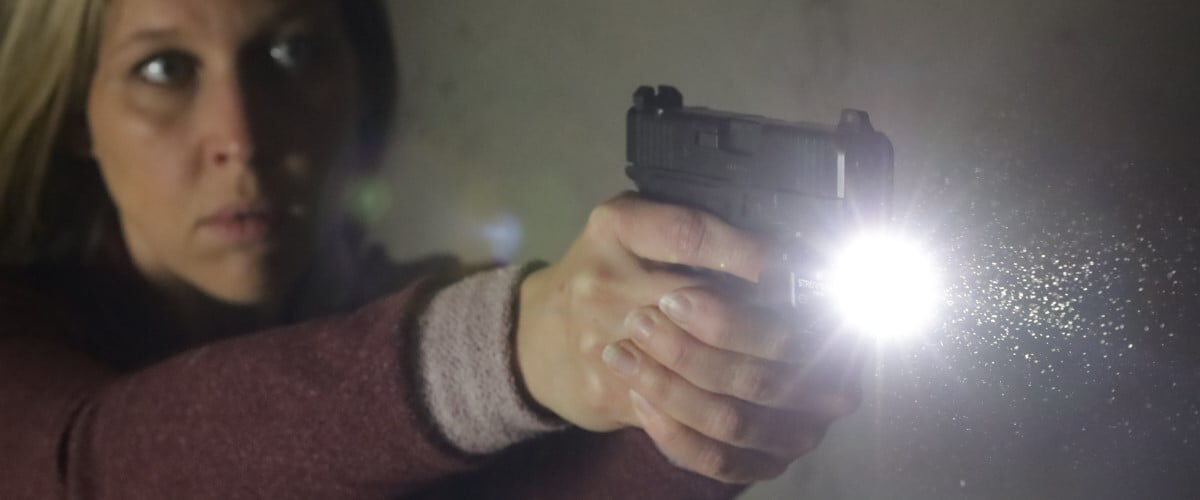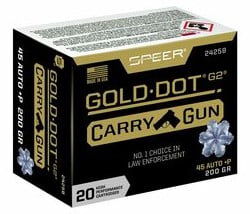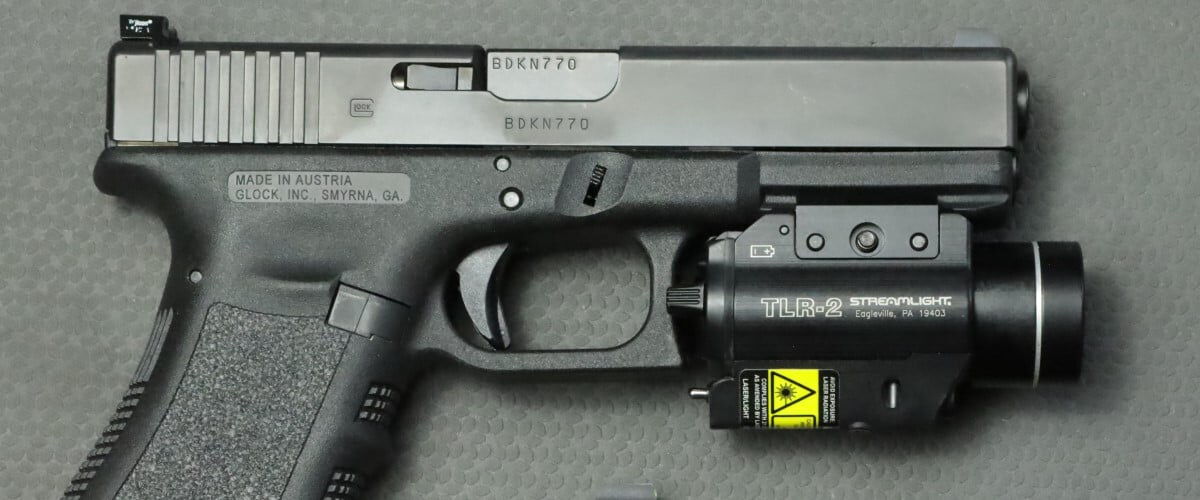
Humans are helplessly visual creatures. While the rest of the animal kingdom navigates their worlds using a mixed bag of scent, hearing and vision, humans rely heavily on our good eyesight. Sure, we can hear and smell, but we don’t really use those senses in the way a deer that positions itself downwind of potential threats or a fox that listens for the diminutive rustling of a mouse in tall grass to secure its next meal.
Our strong eyesight is also our weakness, and criminals know this. In self-defense training, we often shoot in full sun and assume any dangerous encounter will occur in bright light. But violent offenders aren’t looking for a fair fight—they’re looking for an advantage. For that reason, anyone who carries a firearm for self-defense needs to stack the odds in their favor. The easiest way to do that is to carry a light with your firearm.
The Advantages
Gun owners also have the responsibility to clearly identify their target, and this makes having a light a safety issue as well. Having a light with a firearm isn’t just about being able to hit your target, it’s about making sure you don’t shoot the wrong target.
But a light can be a weapon in and of itself. When you’re in a dark room and the light is turned on, it can be disorienting and even painful for your eyes, and this is because the muscles of the eye must instantly adjust the size of the pupil. In darkness, the pupils are dilated—or widened—and a sudden flood of light not only prompts the pupil to dilate but also causes the eyelids to partially or completely close as a means of defending the eyes.

Gold Dot Carry Gun
A shallow, dish-shaped nose cavity filled with elastomer gives this round extremely uniform expansion, better separation of the petals, and more consistent penetration across barrier types when fired through compact carry pistols.
Buy NowThis principle, which you learned in junior high school when your parents woke you up for the bus by flipping on the light, can also help you in self-defense situations. You can immediately disorient an attacker by blasting them in the face with a high-intensity beam of light.
An attacker who can’t see you (or see well at all) is at a disadvantage, and that’s why I suggest everyone carry a tactical flashlight whether they carry a gun or not. Sometimes a bright stream of light is enough to deter someone who plans to rob or harm you, so having a bright light helps shift the odds in your favor.
Mounted Versus Handheld Lights
Tactical lights can either be mounted to your firearm (often referred to as a weapon light or weapon-mounted) or handheld. Each design has its advantages. The obvious advantage with a weapon-mounted light is that both hands are free to operate the firearm. The disadvantage is that pointing the brightest portion of the beam means you’re also pointing a loaded weapon in that direction. That being said, most modern weapon lights offer enough divergent light that they illuminate a wide area. I have a Streamlight TLR-2 on my full-sized 9mm pistol and a Streamlight TLR-8 G Sub on my micro-compact pistol, and I can carry both in the low-ready position with the muzzle pointed safely down in front of me and see well ahead. The TLR-8 G also comes with a green laser, so I have an additional sighting device.
The primary downsides of weapon-mounted lights are that you’ll usually have to order a specialized holster and you’ll need to buy a model that fits on the rail of your gun. Improperly mounted lights can also fall off under recoil.

Handheld lights allow you to move the firearm and light independently, and there’s no need to buy a special holster for a pistol with a weapon-mounted light. You can also tuck a bright flashlight into your pocket when you aren’t carrying a firearm, and there are lots of other times a flashlight is handy and the flashlight on your phone isn’t up to the task. Of course, you’ll have to learn the art of holding a flashlight and gun simultaneously and working around corners, and a handheld flashlight doesn’t offer firearm aiming capabilities.
What To Look For
There are some important considerations when choosing a weapon or tactical light. First, it should have sufficient lumens, something in the 300 to 500 range, You’ll also need to consider candela, which is a measure of light emitted in a particular direction. A 300-lumen light with 18,000 candela, then, has a more concentrated beam than a 300-lumen/12,000-candela light. However, most name-brand weapons/tactical lights have sufficient lumens and candela to perform. Consider battery life, though. The housing of the light should be sturdy but lightweight, and most top brands use quality 6000-series aluminum.
The number of settings is also important. I prefer a light with two or three usable settings (low power, high power, strobe and red light), but I don’t need a light with eight power settings that require lots of toggling. Easy activation is also key: my lights allow me to quickly activate them by touching the paddle levers located at the front of the trigger guard. Of course, price is also a factor, but good lights cost money.
Do you need a light for your firearm? I say yes, and I own several myself. Having a high-intensity tactical light close at hand offers me a huge advantage, and part of a self-defense mindset in stacking the odds in your favor the best you can.